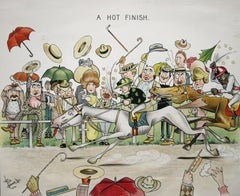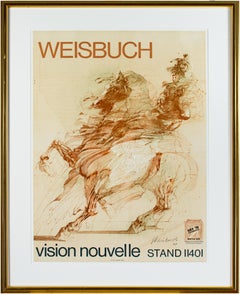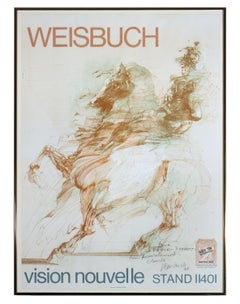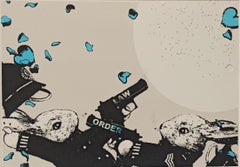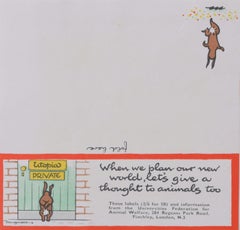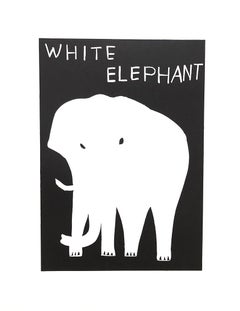Document Animal Prints
to
16
10
9
28
17
10
Overall Width
to
Overall Height
to
23
11
6
6
2
1
1
12
3
2
2
1
55
19
3
4
4
5
7
8
6
7
3
61
10
3
3,532
2,739
1,744
1,465
1,073
835
551
494
446
445
402
348
348
330
243
233
193
182
160
142
34
17
12
8
5
4
11
44
23
Art Subject: Document
A Hot Finish
By Rus Daniels
Located in Paonia, CO
A Hot Finish is a fun, bold and colorful caricature of the racing scene in the early 1900’s. As the winning horse and his jockey are racing to the finish...
Category
1920s Other Art Style Figurative Prints
Materials
Lithograph
'Le Condottiere' original signed lithograph poster, knight on horseback 1970s
Located in Milwaukee, WI
This poster, produced for the 1978 International Meeting of Fine Art Dealers in Washington, features prominently one of Claude Weisbuch's dynamic images: Le Condottiere. It is an original color lithograph advertising his new works, and is one of only twenty-five that bears the artist's signature in the lower right. In line with Weisbuch's interest in the Renaissance and Baroque in Europe, this image looks back to the early modern period. Condottieri were Italian captains...
Category
1970s Contemporary Figurative Prints
Materials
Lithograph
Affiche - Le Condottiere, signed inscribed to D.B.
Located in Milwaukee, WI
Art: 29-3/8"x 21-1/8"
Frame: 31'x 22-1/2"
Original signed lithograph poster
Claude Weisbuch was born in Thionville, France in 1927 and was a pupil at L' École des Beaux-Arts de Nanc...
Category
1970s Animal Prints
Materials
Archival Pigment
Harry Bunce, Law and Order, Limited edition animal print
By Harry Bunce
Located in Deddington, GB
Law And Order by Harry Bunce [2021]
limited_edition
Original Print mounted on mountboard
Edition number 24
Image size: H:59 cm x W:73 cm
Complete Size ...
Category
21st Century and Contemporary Contemporary Animal Prints
Materials
Screen
Fougasse animal welfare rabbit label lithograph
Located in London, GB
To see more, scroll down to "More from this Seller" and below it click on "See all from this Seller".
Fougasse (Cyril Kenneth Bird, 1887 - 1965)
'When we plan our new world, let's g...
Category
Mid-20th Century Modern Animal Prints
Materials
Lithograph
David Shrigley - White Elephant, 2021
Located in Central, HK
David Shrigley
White Elephant, 2021
Linocut
Format 44 x 57 cm
Paper: Somerset 300 gr.
Edition of 100
Hand-signed and numbered
Published by schaefergrafik
Category
2010s Animal Prints
Materials
Paper, Linocut
Poster-Hessel Moore McPherson, Overland Printers
Located in Chesterfield, MI
GREGG HESSEL-Hessel Moore McPherson Overland Printers. Publishing Information: Copyright Mirage Editions, Inc. 1981/Gregg Hessel, Santa Monica, Californ...
Category
1980s Animal Prints
Materials
Lithograph
$120 Sale Price
20% Off
"Sheet of Studies" from the suite "Bestiary and some Correspondences"
Located in San Francisco, CA
This artwork titled "Sheet of Studies, Organic Forms" from the suite "Bestiary and some Correspondences" 1968 is an original color lithograph on Arches paper by renown British artist...
Category
Mid-20th Century Surrealist Animal Prints
Materials
Lithograph
Zoo - Vintage Poster after Waldemar Swierzy - 1974
Located in Roma, IT
Zoo - Vintage Poster is a vintage poster realized by M. Swierzy, in 1974.
Colored offset print.
Signed n the plate.
Good conditions, except for som...
Category
1970s Contemporary Animal Prints
Materials
Offset
Harry Bunce, Law and Order, Limited edition animal print, Political Art
By Harry Bunce
Located in Deddington, GB
Law And Order by Harry Bunce [2021]
limited_edition
Original Print mounted on mountboard
Edition number 24
Image size: H:59 cm x W:73 cm
Complete Size of Unframed Work: H:59 cm x...
Category
21st Century and Contemporary Contemporary Animal Prints
Materials
Screen, Paper
Pierre Jacob - Minotaure-Manga-B
Located in Saint Ouen, FR
"Minotaure-Manga-B ".
Lithographic print / Black ink printed on 240gr JOHANOT paper.
Dimensions : 56 x 38 cm
signed and numbered at 6 copies by the artist
The prints were made in...
Category
2010s Animal Prints
Materials
Paper, Acrylic
Washington Mardi Gras - Signed Silkscreen Print Blue Dog
Located in Mount Laurel, NJ
This Blue Dog work consists of a blue dog traced in gold with a purple & gold crown, a red cape, and a gold medallion on a black background. This work depicts a poster with a gold frame and green dots to illustrate the celebration of the "Mystick Krewe of Louisianans" 1997 50th Anniversary Mardi Gras Ball in the nation's capital of Washington, DC. The dog has soulful yellow eyes. This pop art animal original silkscreen print on paper is hand-signed by the artist.
Artist: George Rodrigue
Title: Blue Dog “Washington Mardi Gras...
Category
1990s Pop Art Animal Prints
Materials
Screen
Georges Braque - Original Lithograph
Located in Collonge Bellerive, Geneve, CH
Georges Braque - Original Lithograph
1963
Dimensions: 32 x 24 cm
Andre Sauret, Monte Carlo
The father of Cubism
Three Cubist that distinguishes art historian periods were initiated and developed by Georges Braque: The Cubist Cézanne (1907-1909), Executive (1909-1912) and synthetic (1912-1922).
Post-Impressionist and fawn, Braque no longer adheres to the contingency of a decorative way or the other. Cézanne’s paintings exhibited at the Grand Palais during the retrospective of 1907 are a revelation: Cézanne sought and invented a pictorial language. In his footsteps, Braque went to the South with the reasons of the Master. He returned with Estaque landscapes and surprising Ciotat it keeps Cezanne geometric model and retains the “passages” continuity from one surface to another to create the sensation of “turning around” of the object represented. But he wants to go after the consequences of the vision of Cezanne. In his paintings Houses in L’Estaque (1908) it simplifies the volumes of houses, neglects detail by removing doors and windows: the plastic rhythm that builds the table. Large Nude , a masterpiece of the period, can be considered the first work of Cézanne cubism .
Systematizing and deepening Braque discoveries open the door analytical cubism. In 1909, his painting became more cerebral than sensual. The pattern is recreated in the two-dimensionality of the canvas, leaving aside any illusionistic perspective. In Still Life with Violin, objects are analyzed facets according to their characteristic elements, each facet referring to a particular view of the object. There are so many facets of points selected view: Table reflects the knowledge of the object and the ubiquity of the eye. Moreover, Braque is looking for the essence of the objects in the world rather than their contingency, which explains the absence of light source and use of muted colors (gray, ocher), contingent aspects of the object . But formal logic has stepped facets, erased any anecdote to the object and ultimately led to his painting a hermetic more marked on the edge of abstraction (see the series of Castle Roche-Guyon ).
Braque, anxious to keep the concrete and refusing at all costs that the logic of Cubism takes the paintings to abstract, reintroduced signs of reality in his paintings in 1912 marks the beginning of Synthetic Cubism. Historians speak of “signs of real” rather than reality because what interests Braque, this is not to put reality into a table, but to create a painting which, by its language, refers to the real. To do this, he invented two major techniques XX th century inclusions and contributions. The inclusions consist of painting objects that have no real depth, materials (wallpaper in Nature morte aux playing cards faux wood is a pictorial inclusion) or letters (calligraphic inclusion in Portuguese ), made first brush and a few months later stencil. Contributions are defined in contrast with the collage on canvas of foreign materials: glued or sand paper, sawdust, etc.. Regarding the collages, Braque used for the first time in September 1912 a piece of adhesive paper imitating faux wood Compote and Glass , then the packet envelope of tobacco Bock in 1912-1913, or an advertisement in Damier , 1913). Inputs and inclusions refer to an external object in the table, without “emulate” this object. Away from their appearances, objects are represented in closest essence of the objects in the real world sense.
This is also the time of Synthetic Cubism that Braque invented paper sculpture. There are, unfortunately, and no one is living proof of a photograph makes it possible to realize: Paper and paperboard.
Métamorphoses period(1961-1963).
In 1961, Georges Braque worked on a Greek head for the Louvre, which obsesses him, and he wishes to free his mind. He tried several times to bring out the paint and the result was unsatisfactory. He thinks the ultimate metamorphosis its Greek head projected in three dimensions. He calls in his studio of Baron Heger Loewenfeld, master lapidary, and he communicates his enthusiasm during the “fateful encounter.” Nine months later, in honor of the eighty years of Georges Braque, Heger Loewenfeld offers the Master of the ring Circe: the famous Greek head finally exorcised, carved in an onyx. Braque Loewenfeld then asked to identify other issues that haunt him.
From dated and signed by Georges Braque, Heger gouaches Loewenfeld shapes works in the fields of jewelery, lapidary art...
Category
1960s Modern Figurative Prints
Materials
Lithograph
Guerrilla Girls Do Women Have to Be Naked To Get Into the Met Museum?
Located in NEW YORK, NY
Guerrilla Girls:
Vintage original 1989 poster for: Guerilla Girls: Do Women Have To Be Naked To Get Into the Met. Museum?
Pictured here is the much i...
Category
1980s Feminist Figurative Prints
Materials
Screen
Still Thinking About These?
All Recently ViewedMore Ways To Browse
Vintage Posters Coppertone
Warhol Siberian Tiger
Warhol Zebra
Wild Turkey Audubon
William Jardine
18th Century Canadian Art
Ana Maria Pacheco
Andy Warhol Lion
Antique Bird Prints Red Hawk
Audubon Print Fish
Audubon Quadruped Cougar
Audubon Rabbit
Audubon Whooping Crane
Banksy Clown
Barn Owl Lithograph
Catesby Bird Prints
Clare V
Clown Skateboards
